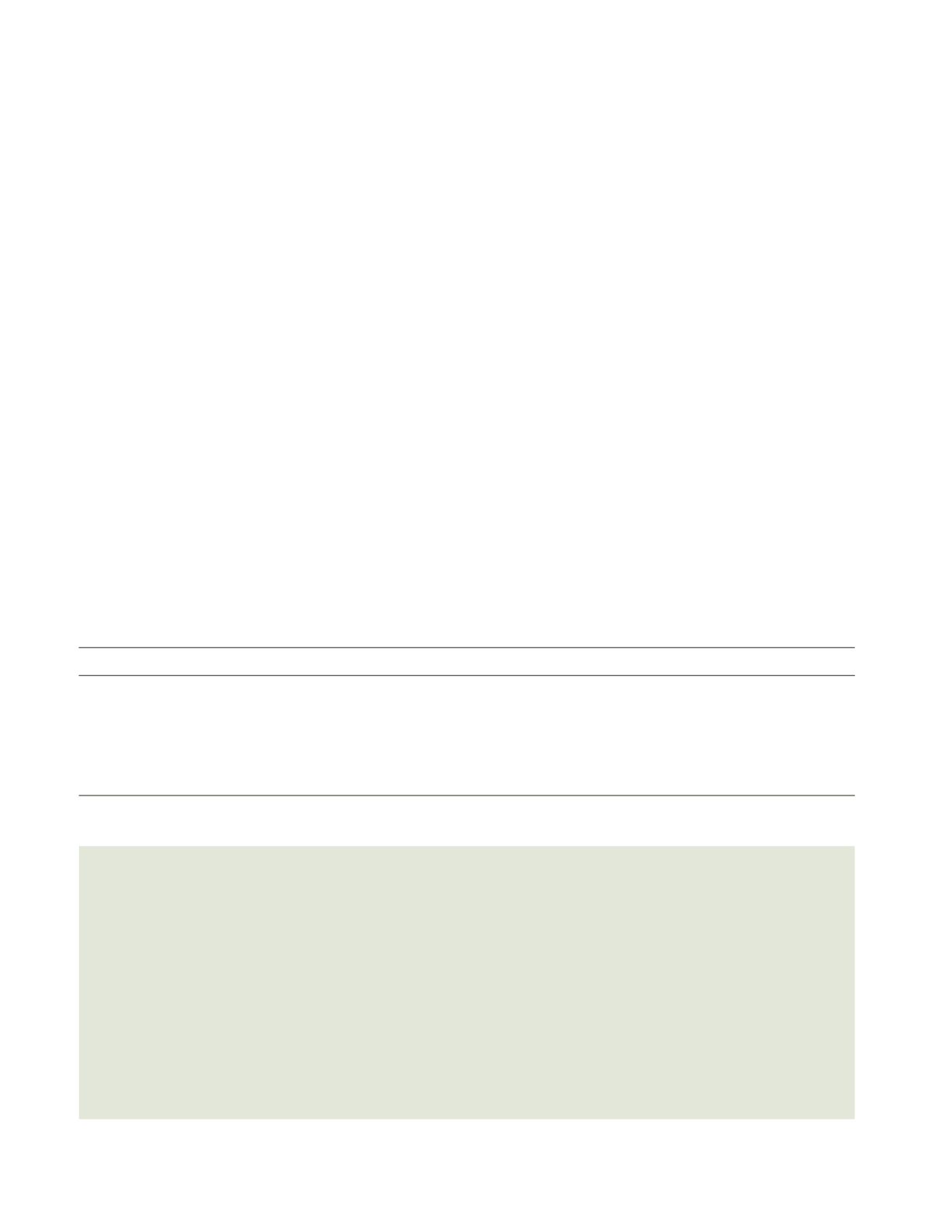
bu i ld i ng an i nc lu s i ve f i nanc i a l s e ctor i n i nd i a
93
around 49,773 of these SHGs were credit linked as on 31
March 2014. A cumulative amount of Rs. 343.8 million
was released as grant assistance out of the Women SHG
Development Fund (WSHG) for various activities under
the scheme.
4.6.1 Joint Liability Groups
NABARD designed joint liability groups (JLGs) of four
to ten members to meet the farm and non-farm credit
needs of small farmers, marginal farmers, sharecroppers
and oral lessees with no access to formal credit to the
absence of title deeds. These livelihood groups come
together on the basis of mutual guarantee and include
clients engaged in crop production or similar economic
activities. Unlike SHGs, JLGs are basically credit groups
but savings is encouraged, with no specific requirement
of loans-to-savings ratio (Table 4.13).
By 31 March 2014, 658,000 JLGs had been promoted
and Rs. 60.76 billion of credit disbursed cumulatively.
During 2013–14, Rs. 13.93 billion was disbursed by
banks to around 129,000 JLGs and the cumulative loan
disbursement as on 31 March 2014. Grant assistance of
Rs. 767.4 million had been sanctioned for promotion of
399,000 Joint Liability Groups (JLGs) across the country
as on 31 March 2014.
500,000 JLGs of landless farmers are to be financed
during 2014–15. Overall the JLG model of financing
by banks has met with success in extending the scope
of inclusive finance covering sections of the unbanked,
weaker sections of society.
SHG members requiring larger amounts of credit too
can graduate to the JLG mode. See, for example, Box 4.1.
However, the idea of forming JLGs out of enterprising
members of existing SHGs with a view to provide them
larger loans is fraught with risks as well—for example,
whether the ‘joint liability’ principle as applied to small-
scale loans to Grameen-type groups could be extended
to large loans as well. Besides, SHGs, many of which
practice equal sharing of loans, need to be sensitized to
T
ABLE
4.13
Differences between SHGs and JLGs
Particulars
SHG-BLP
JLG-BLP
Group size
Informal group up to 20 members
Informal group with 4–10 members
Purpose
Initially for consumption and then for income generation activities
Focus on income generation activities
Savings
Savings-cum-loan product with loan size linked to savings
Credit product but savings encouraged
No specific loan-to-savings ratio
Period
Credit linkage after six months of savings
Instant credit
Client
Focus on poor women with no access to banking
Small and marginal farmers, sharecroppers, etc.
B
OX
4.1
Business Oriented Groups
Having faced competition from MFIs in the state, the Primary Agricultural Cooperative Society, Kinnal in Koppal district,
Karnataka started financing ‘Business Oriented Groups’ (BOG) in addition to the normal SHGs. BOGs comprise of select members
of 3 to 4 existing SHGs who are in need of a higher amount of loan. This new group is formed and, based on actual requirement,
individual loans are issued. The PACS have initiated these new types of SHGs to counter the threat posed by the MFIs, who were
trying to dismantle the SHGs formed by PACS. The members of the Business Groups also continue to be members of the parent
SHGs. BOG members are happy to receive the required loan amount from the PACS at a relatively lower rate of interest. For the
Business Groups, the PACS charges an extra 3 per cent per cent interest, i.e., 2 per cent per cent towards risk fund and 1 per cent
per cent towards service charge. Further, the PACS, Kinnal has appointed animators for supervising these groups and is paying their
salary out of the extra interest charged to members of these groups. This is similar to the ‘JLGs within SHG’ concept introduced
in SHG 2.
Source
: Adapted from Satyasai, Sahoo and Badajena (2014).


